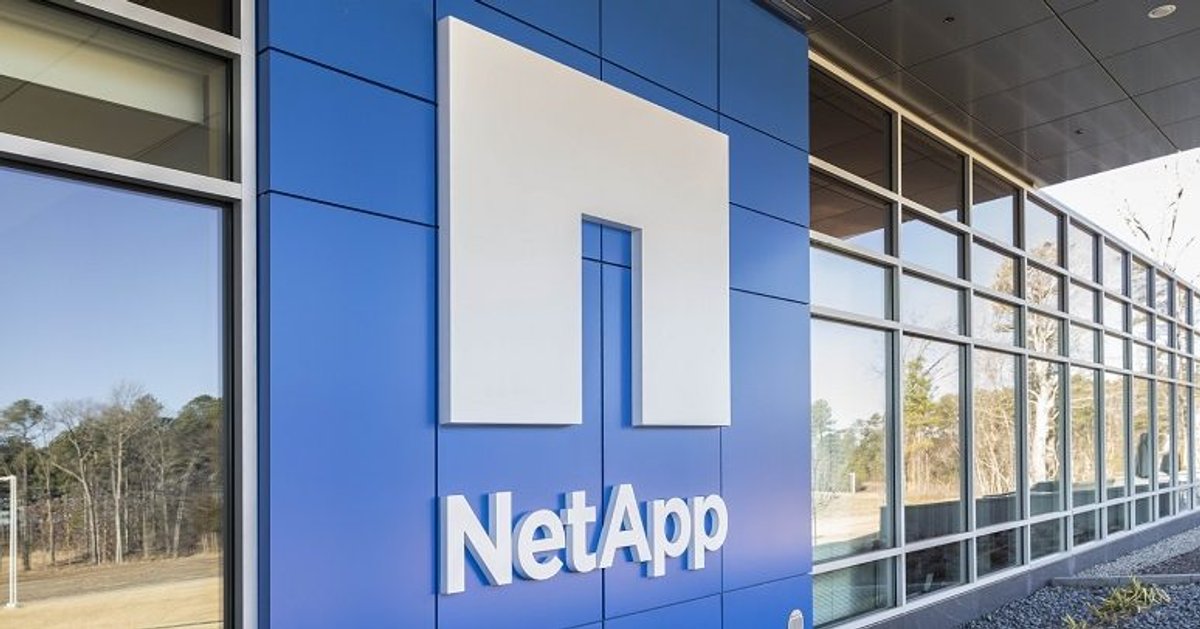Let's Master AI Together!
NetApp: How AI Expansion is Challenging the UK's Green Goals
Written by: Chris Porter / AIwithChris

Image Source: BizClik Media
The Intersection of AI Expansion and Sustainability
The rapid advancement of artificial intelligence (AI) technologies is reshaping various sectors, including data management and energy consumption. As organizations increasingly implement AI to enhance efficiency and prediction accuracy, the pressure on energy resources mounts. A pivotal player in this narrative is NetApp, a leading data storage solutions provider, which is making significant strides toward reducing greenhouse gas (GHG) emissions. This article delves into how NetApp's goals align with the UK's broader sustainability objectives and the challenges posed by the proliferation of AI.
NetApp has embarked on an ambitious journey to curtail its GHG emissions amidst escalating demands for AI-capable infrastructure. Nonetheless, the surge in computing requirements to support AI applications has led to heightened energy consumption in data centers worldwide. For instance, the company's Chief Sustainability Officer, Nicola Acutt, has highlighted the unsustainable nature of this trend, which not only affects the environment but also poses a challenge to profitability. This article will explore NetApp's GHG emission reduction goals, the energy demands of AI, and the implications for the UK's green initiatives.
NetApp’s Commitment to Emission Reduction
In response to the growing energy demands linked with AI, NetApp is proactively addressing its carbon footprint. The company has secured validation from the Science Based Targets Initiative (SBTi) for its emissions reduction targets. The initiative has endorsed NetApp's commitment to reducing absolute scope 1 and 2 GHG emissions by an impressive 50.8% by 2030, using 2020 as the baseline year. Additionally, the company aims to decrease scope 3 emissions by 51.6% per petabyte shipped from a 2023 base year. These ambitious targets underscore NetApp's alignment with international standards for sustainability.
The importance of SBTi validation cannot be overstated. It serves as an internationally recognized benchmark for assessing sustainability efforts and empowers customers to make informed choices about vendor partnerships. By having its goals vetted through this initiative, NetApp positions itself as a trusted partner in the transition towards more sustainable practices. The company’s endeavors not only reflect a response to customer feedback but also indicate a strategic shift towards modernizing product development to prioritize sustainability.
The Growing Demand for AI and its Environmental Impact
As AI becomes more integrated into organizational infrastructures, the demand for processing power has surged. This increased reliance on AI applications is fueling the need for data centers to enhance their capabilities, further driving energy consumption. As of recent findings, data centers account for a significant portion of energy used globally, and with the rise of AI, this figure is only expected to escalate. Herein lies the challenge for providers like NetApp, who must balance the increasing demand for their offerings while adhering to stringent sustainability commitments.
The staggering energy consumption associated with AI technology has raised alarms, prompting scrutiny from environmental watchdogs and regulatory bodies. As organizations evolve and rely more on AI, they must also consider the environmental repercussions of their data management strategies. This requirement creates a tension point for NetApp, which is committed to advancing its technological capabilities without compromising on its sustainability aspirations.
Integrating Sustainability into Product Development
A significant aspect of NetApp’s sustainability initiative is its sophisticated integration of eco-friendly principles into product development. The company recognizes that managing growing data volumes effectively requires innovations that capitalize on sustainability regardless of potential computing demands. By embedding sustainable practices in their product roadmap, NetApp distinguishes itself as the first in its industry to align technological advancements with greener outcomes.
By investing in sustainable technologies, NetApp aims to provide its customers with energy-efficient solutions that contribute to reducing the overall carbon footprint of their operations. Upgrading existing infrastructures with energy-efficient components is a critical strategy that ensures that the company meets its targets without sacrificing performance. This approach not only promotes environmental stewardship but also offers clients cost-effective alternatives to traditional data management solutions.
NetApp’s commitment to incorporating sustainability into its innovations and product lineup not only reflects its corporate responsibility but sets a precedent for other actors in the tech space. As more companies begin to recognize the need for sustainable practices in their own operations, NetApp stands at the forefront as a model for integrating environmental considerations into the core of business strategy.
Challenges to Achieving Green Goals
Despite its ambitious commitments, NetApp faces substantial challenges in achieving its green goals. The sheer pace at which AI technologies continue to evolve means that companies often react rather than plan for future energy demands. This reactive approach can undermine long-term sustainability strategies, as organizations may find themselves continually playing catch-up with their energy requirements. The unpredictable nature of technological advancement intensifies pressure on providers to adapt their infrastructure, sometimes at the expense of sustainable practices.
Additionally, the competitive landscape in the technology sector presents another hurdle. As AI's potential grows, rival companies may not prioritize sustainability to the same extent, creating a race to offer the most powerful solutions regardless of environmental impact. If firms fail to keep pace with green initiatives, they risk alienating customers who are increasingly mindful of their carbon footprint. In this regard, NetApp must not only focus on its goals but also communicate its sustainability narrative effectively to its clientele, ensuring it remains relevant in a market driven by ethical consumption.
The Role of Partnerships in Sustainability
To bolster its sustainability efforts, partnerships play an essential role for NetApp. Engaging with other companies, nonprofits, and governmental bodies can help accelerate innovation and share best practices in sustainability. Through collaboration, NetApp can enhance its resource efficiency, access new technologies that reduce emissions, and cultivate a network of support for its sustainability initiatives.
These partnerships can take many forms, from joint research initiatives to working with NGOs focused on environmental issues. By fostering an ecosystem of shared responsibility, NetApp separates itself from competitors and nurtures a culture that prioritizes sustainable development. The collaborative approach also assists in gathering insights into consumer attitudes towards sustainability, informing NetApp’s strategy moving forward.
Towards a Sustainable Future
Ultimately, NetApp's strategies to reduce GHG emissions and embrace sustainability in the burgeoning AI landscape are commendable. Although hurdles remain, such as heightened energy demands and the competitive environment, the company’s commitment to achieving significant reductions in emissions sets a benchmark for the industry. The validation received from SBTi is a testament to the company’s dedication to fostering genuine sustainability.
As awareness of climate change proliferates, it becomes increasingly clear that companies must recognize their roles in shaping a greener future. For organizations like NetApp, navigating this complex terrain requires agility, innovation, and transparency as they strive to meet sustainability objectives. In doing so, NetApp not only reinforces its reputation as a trusted vendor but also contributes to the broader movement toward responsible AI utilization that aligns with the UK's green goals.
Conclusion
In summary, the interplay between AI expansion and sustainability is inherently complex, yet it offers significant opportunities for companies like NetApp to redefine their commitment to the environment. By securing validation for its emissions reduction targets from the Science Based Targets Initiative and integrating sustainability into its product development, NetApp is setting a precedent in the tech industry. Customers and stakeholders alike must hold businesses accountable for their sustainability claims, ensuring their practices align with green goals. To learn more about AI and how companies like NetApp are navigating this intricate landscape, visit AIwithChris.com for in-depth resources and insights.
_edited.png)
🔥 Ready to dive into AI and automation? Start learning today at AIwithChris.com! 🚀Join my community for FREE and get access to exclusive AI tools and learning modules – let's unlock the power of AI together!
